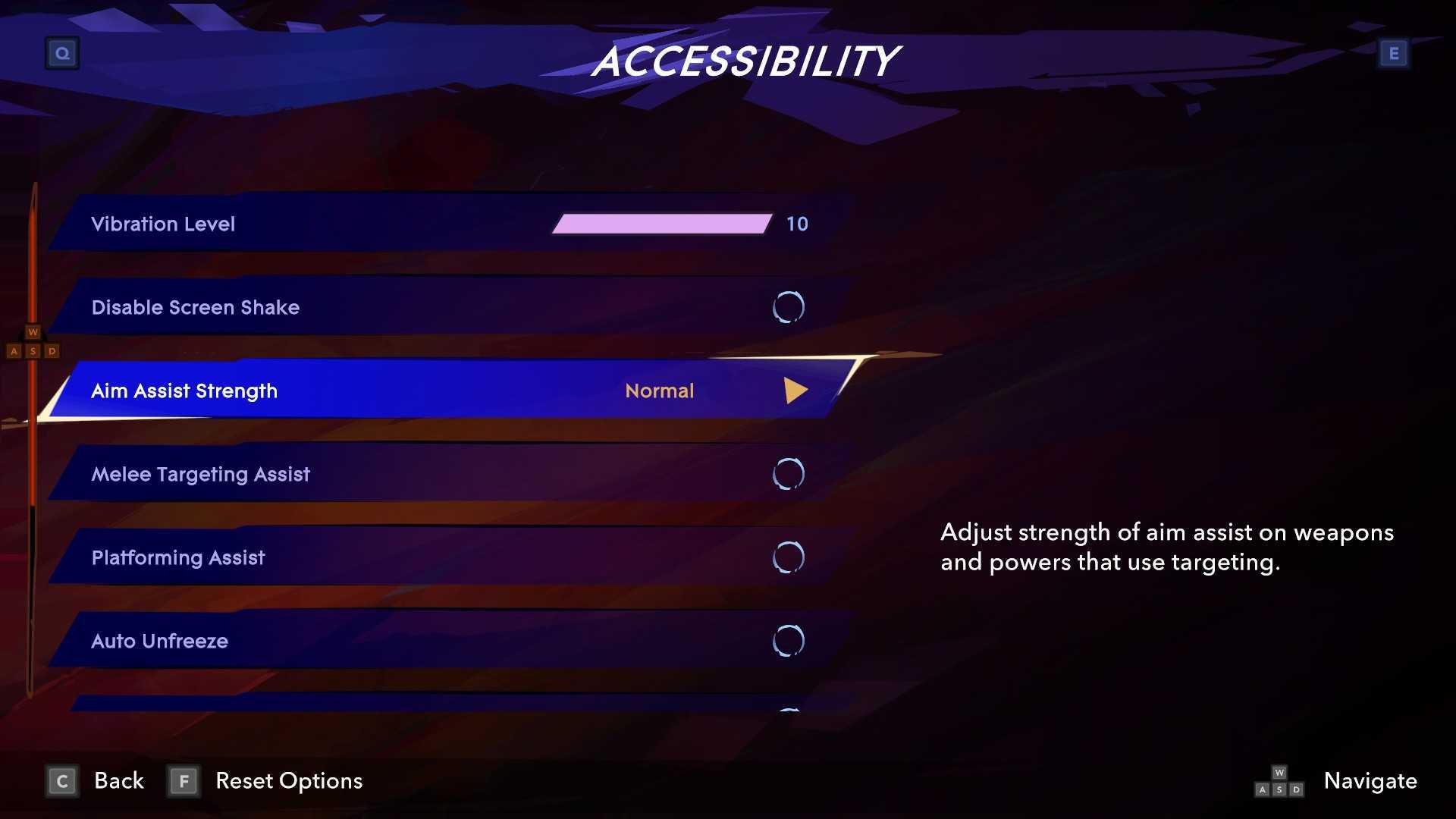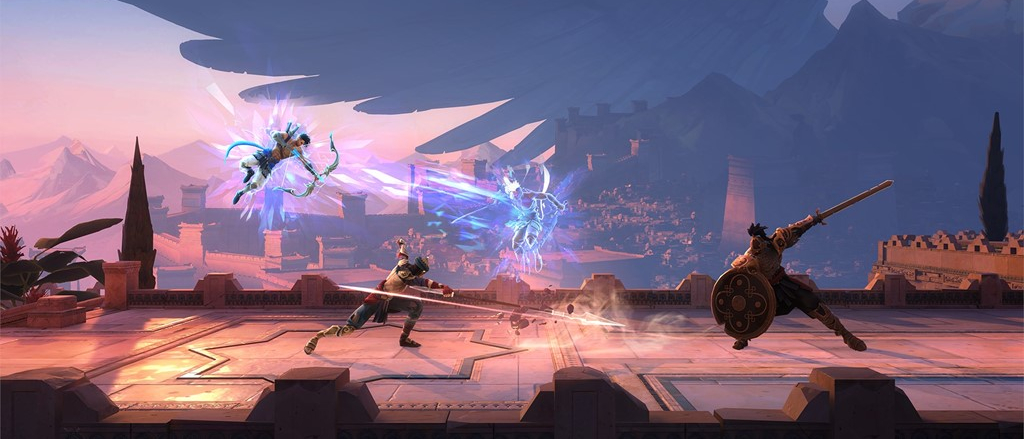TechRadar Verdict
Prince of Persia: The Lost Crown paints a picture of sustainable development as it infuses all the thrills of a modern AAA release into a smaller package. Heavy on ideas and experiments, this is top-notch.
Pros
- +
Fluid movement
- +
Strong visual identity
- +
Thoughtful reinvention of metroidvania tropes
Cons
- -
Parry timing is brutally unforgiving
- -
Checkpointing can feel cruel
Why you can trust TechRadar
Platform reviewed: PS5
Available on: Nintendo Switch, PlayStation 5, PlayStation 4, Xbox Series X|S, and PC
Release date: January 18, 2024
As soon as you wrap up Prince of Persia: The Lost Crown’s tutorial and get into the magical mountain where the meat of the game takes place, you’ll be hooked. This first hour or so is all movement, bouncing around to take the fight to the scores of undead that uneasily stride into your path in each room, and it’s hard not to fall in love with it.
This is the new Prince of Persia, the same as the old Prince of Persia. The Lost Crown is a two-dimensional side-scrolling action game that takes that 1989 idea of the original Prince of Persia and infuses it with metroidvania sensibilities. The end result has the same intensity as its genre stablemates Dead Cells and Metroid Dread, but The Lost Crown is its own beast, with a kineticism that outstrips any other metroidvania I’ve ever played.
New hero Sargon pinballs around The Lost Crown’s open world as equal parts acrobat and dancer. Fights will often involve springing into a diving attack from a wall jump, knocking enemies up from the flagstones below, or parrying attacks with ease.
Honestly, though, The Lost Crown is better in movement but flails a bit when it asks you to get stuck in with the combat. Luckily, you spend most of the time holding down the right trigger to sprint around, barely stopping to brutalize the infinitely respawning enemies dotted around the map.
While there is some awkward friction, it’s hard not to see Prince of Persia: The Lost Crown as a bold and thoughtful blueprint for reinventing a franchise. While it’s not for this review to talk about the state of AAA game development, and I can’t claim to know how much Prince of Persia: The Lost Crown cost to make, it feels like it’s blazing a trail for a world where more experimental visions of your favorite games can be tried out, instead of rote retreading of games everyone is, secretly, a little bit bored of.
Hail to the prince

If you haven’t noticed yet, movement is the most satisfying part of Prince of Persia: The Lost Crown. Sargon is lithe and immediately has access to a full suite of movement-based abilities. From the very start of the game, he can wall jump, sprint, slide across cobbles, and sling himself through the sky, gripping metal rings and flag poles right out of the Super Nintendo classic Aladdin.
You’ll unlock more abilities throughout the game; this is a metroidvania after all. But you never feel like you’re missing out in the way you do in games like Dying Light 2 or Mirror’s Edge Catalyst, where your movement is initially hampered. When you do get extra objects to help you get around, like a bow and arrow (mostly used for traversal and puzzle solving) or even air dashes, they feel like they’re adding layers to a fleshed-out set of skills rather than papering over glaringly obvious gaps that have been there since the start of the game.
Sign up for breaking news, reviews, opinion, top tech deals, and more.

Coming back to the openly derisive blacksmith god Kaheva after besting a particularly tough challenge they set for you, they go to call you a mortal again - as they have many times before - but then correct themselves, addressing you instead as warrior. It felt well earnt.
Combat is similar in that you’re given access to a variety of different moves. Your repertoire of abilities will let you knock enemies into the air or off ledges, and while the base attack is that same dull three-hit combo (that can be expanded into four later in the game), you’ll often be moving around instead of fighting from a stationary position, so you’ll rarely notice.
The problem with fighting in The Lost Crown is more about impact. Even the lowliest minion can take a real beating, which feels at odds with how nimble you are. When it takes 10 hits to send even the most mediocre of enemies to the shadow realm, the rhythm of combat feels a little off. This isn’t as noticeable in the boss fights: those are supposed to be hard to fight. But when the game throws a handful of enemies at you in one of several scripted fights, it’s a real chore when even ostensibly human assassins are shrugging off repeated sword strikes.
Combat is brutal, too. Enemies hit hard, so dodging and parrying are essential if you don’t want to get turned into a meaty paste. I’m bad at melee combat games, so it’s potentially a skill issue, but I found parrying to have a brutally short window and pulling one off successfully can be incredibly frustrating.
Upgrades - doled out by the titanic god Kaheva at her blacksmith or an old woman squatting in a tent - do little to make the combat feel punchier, and so I found the best option was just to avoid the fights as I explored.
Time to kill

Obviously, it’s a Prince of Persia game post 2003’s Sands of Time, so there’s a heavy time element. The story involves Sargon and his gang of ancient heroes wandering into a cursed mountain. There are no real surprises here, but the narrative is well-handled, and there are a few different side quests that encourage you to explore.
The aforementioned upgrade system is fairly by the numbers, with the addition of an amulet system that lets you pick up extra perks and slot them into empty sockets. More powerful amulets take up more sockets, and it can add a bit more customization to vary your playstyle. Personally, I was a big fan of an amulet that made every parry generate a little time bubble that slowed down enemies within it. I sucked at parrying, but it made parrying so valuable in encounters where you were getting swarmed that it made it worth trying to pull them off again and again.

There's a wealth of accessibility options here. The option of a high contrast mode or subtitles (with several settings for font size and opaque backgrounds) feel well implemented and will greet you on first start up.
However, there's a host of toggles to change play, too. Options to make tough platform sections skippable and combat easier will allow people to customise their play experience. Auto-aim can be adjusted, and assistance for targetting enemies in melee is also available.
My most memorable moments with Prince of Persia: The Lost Crown aren’t the story or the combat but the platforming puzzles of jumping through spinning buzzsaws and skipping like a stone through chambers filled with puddles of poison, whirling blades, and hordes of enemies. That dizzying sense of speed is the unique thing that The Lost Crown brings to the metroidvania genre though, and it’s something that will keep me coming back to it again and again.
For more thrilling titles just like this one, check out the best single-player games and the best story games that are all available to play right now.

Jake Tucker is the editor in chief of TechRadar Gaming and has worked at sites like NME, MCV, Trusted Reviews and many more. He collects vinyl, likes first-person shooters and turn-based tactics titles, but hates writing bios. Jake currently lives in London, and is bouncing around the city trying to eat at all of the nice restaurants.
